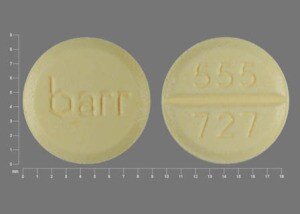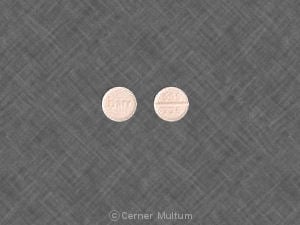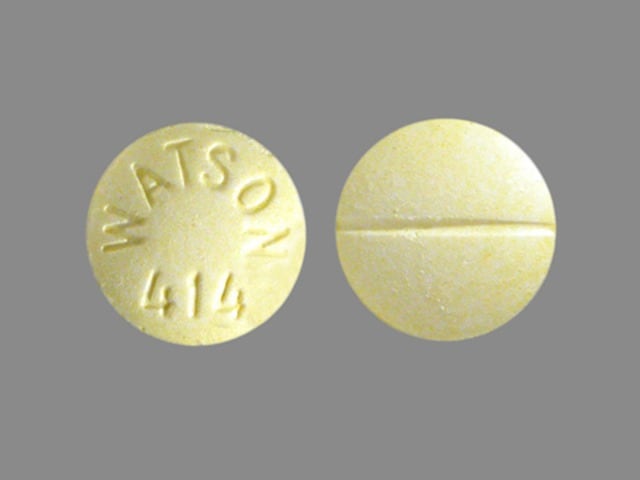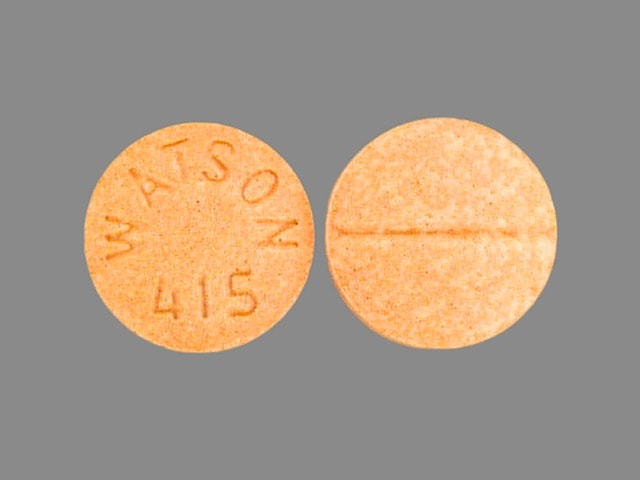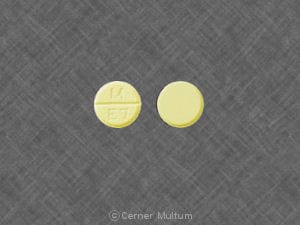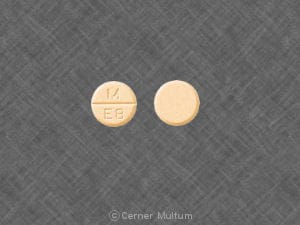Boxed Warning
Endometrial cancer:
There is a risk of endometrial cancer in a woman with a uterus who uses unopposed estrogens. Adding a progestin to estrogen therapy has been shown to reduce the risk of endometrial hyperplasia, which may be a precursor to endometrial cancer. Adequate diagnostic measures, including direct or random endometrial sampling when indicated, should be undertaken to rule out malignancy in postmenopausal women with undiagnosed persistent or recurring abnormal genital bleeding.
Cardiovascular disease:
Estrogen-alone or estrogen plus progestin therapy should not be used for the prevention of cardiovascular disease. The Women's Health Initiative (WHI) estrogen-alone substudy reported increased risks of stroke and deep vein thrombosis (DVT) in postmenopausal women (50 to 79 years of age) during 7.1 years of treatment with daily oral conjugated estrogens (CE) (0.625 mg), relative to placebo. The WHI estrogen plus progestin substudy reported increased risks of DVT, pulmonary emboli, stroke, and myocardial infarction in postmenopausal women (50 to 79 years of age) during 5.6 years of treatment with daily oral CE (0.625 mg) combined with medroxyprogesterone (MPA) (2.5 mg), relative to placebo.
Breast cancer:
The WHI estrogen plus progestin substudy reported increased risks of invasive breast cancer.
Dementia:
Estrogen-alone or estrogen plus progestin therapy should not be used for the prevention of dementia. The Women's Health Initiative Memory Study (WHIMS) estrogen-alone ancillary study of the WHI reported an increased risk of developing probable dementia in postmenopausal women 65 years of age or older during 5.2 years of treatment with daily oral CE (0.625 mg), relative to placebo. The WHIMS estrogen plus progestin ancillary study of the WHI reported an increased risk of developing probable dementia in postmenopausal women 65 years of age or older during 4 years of treatment with daily oral CE (0.625 mg) combined with MPA (2.5 mg), relative to placebo. It is unknown whether these findings apply to younger postmenopausal women.
Risks vs benefits:
In the absence of comparable data, these risks should be assumed to be similar for other doses of CE, CE plus MPA, other dosage forms of estrogens, and other combinations and dosage forms of estrogens and progestins. Estrogens with or without progestins should be prescribed at the lowest effective doses and for the shortest duration consistent with treatment goals and risks for the individual woman.
Dosage Forms
Excipient information presented when available (limited, particularly for generics); consult specific product labeling. [DSC] = Discontinued product
Tablet, Oral:
Generic: 0.75 mg [DSC], 1.5 mg [DSC], 3 mg [DSC]
Pharmacology
Mechanism of Action
Estropipate is prepared from naturally occurring estrone. Estrogens are responsible for the development and maintenance of the female reproductive system and secondary sexual characteristics. Estradiol is the principle intracellular human estrogen and is more potent than estrone and estriol at the receptor level; it is the primary estrogen secreted prior to menopause. In males and following menopause in females, estrone and estrone sulfate are more highly produced. Estrogens modulate the pituitary secretion of gonadotropins, luteinizing hormone, and follicle-stimulating hormone through a negative feedback system; estrogen replacement reduces elevated levels of these hormones. Estropipate is prepared from purified crystalline estrone that has been solubilized as the sulfate and stabilized with piperazine.
Pharmacokinetics/Pharmacodynamics
Absorption
Well absorbed
Distribution
Widely distributed; high concentrations in the sex hormone target organs.
Metabolism
Hepatic; partial metabolism via CYP3A4 enzymes; estradiol is reversibly converted to estrone and estriol; estrogens also undergo enterohepatic recirculation by conjugation in the liver, followed by excretion of sulfate and glucuronide conjugates into the bile, then hydrolysis in the intestine and estrogen reabsorption. Sulfate conjugates are the primary form found in postmenopausal women.
Excretion
Primarily urine (as estradiol, estrone, estriol and their glucuronide and sulfate conjugates).
Protein Binding
Bound to sex hormone-binding globulin and albumin.
Use: Labeled Indications
Hypoestrogenism, female: Treatment of hypoestrogenism due to hypogonadism, castration, or primary ovarian failure.
Osteoporosis prevention: Prevention of postmenopausal osteoporosis.
Limitations of use: For use only in women at significant risk of postmenopausal osteoporosis; consider use of nonestrogen medications.
Vasomotor symptoms due to menopause: Treatment of moderate to severe vasomotor symptoms due to menopause.
Vulvar and vaginal atrophy due to menopause: Treatment of moderate to severe symptoms of vulvar and vaginal atrophy due to menopause.
Limitations of use: When used solely for the treatment of vulvar and vaginal atrophy, topical vaginal products should be considered.
Note: The International Society for the Study of Womens Sexual Health and The North American Menopause Society have endorsed the term genitourinary syndrome of menopause (GSM) as new terminology for vulvovaginal atrophy. The term GSM encompasses all genital and urinary signs and symptoms associated with a loss of estrogen due to menopause (Portman 2014).
Contraindications
Anaphylactic reaction or angioedema to estropipate or any component of the formulation; undiagnosed abnormal genital bleeding; deep vein thrombosis or pulmonary embolism (active or history of); active or history of arterial thromboembolic disease (eg, stroke, myocardial infarction); breast cancer (known, suspected, or history of); estrogen-dependent tumor (known or suspected); hepatic impairment or disease; pregnancy (known or suspected); protein C, protein S, or antithrombin deficiency, or other thrombophilic disorders.
Documentation of allergenic cross-reactivity for estrogens is limited. However, because of similarities in chemical structure and/or pharmacologic actions, the possibility of cross-sensitivity cannot be ruled out with certainty.
Dosage and Administration
Dosing: Adult
Female: General dosing guidelines: When treating symptoms of menopause, hormone therapy should be evaluated routinely for appropriate dose, duration, and route of administration for each individual patient based on treatment goals, risk factors, and overall health (NAMS 2017). Combined estrogen/progestin therapy is indicated for postmenopausal persons with a uterus to decrease the risk of endometrial cancer. Individuals who have had a hysterectomy generally do not need a progestin; however, one may be needed if there is a history of endometriosis. Adjust dose based on patient response.
Hypoestrogenism (female) due to castration or primary ovarian failure: Oral: 1.5 to 9 mg daily for the first 3 weeks of a theoretical cycle, followed by a rest period of 8 to 10 days. Adjust dose based upon the patient's response and maintain at the lowest effective dose.
Hypoestrogenism (female) due to hypogonadism: Oral: 1.5 to 9 mg daily for the first 3 weeks of a theoretical cycle, followed by a rest period of 8 to 10 days. Repeat if bleeding does not occur by the end of the rest period. The duration of therapy necessary to product the withdrawal bleeding will vary according to the responsiveness of the endometrium. If satisfactory withdrawal bleeding does not occur, give an oral progestin in addition to estrogen during the third week of the cycle. Adjust dose based upon the patient's response and maintain at the lowest effective dose.
Osteoporosis prevention: Oral: 0.75 mg daily for 25 days of a 31-day cycle
Vasomotor symptoms due to menopause: Oral: 0.75 to 6 mg daily. If menstrual bleeding has not occurred for ≥2 months, cyclic administration can be started at any time. If the patient has menstruated, start cyclic administration on day 5 of bleeding.
Vulvar and vaginal atrophy due to menopause: Oral: 0.75 to 6 mg daily; administer cyclically.
Dosing: Geriatric
Note: Women >65 years of age should be assessed for benefits and risks of treatment; possible adjustments to safer lower-dose and/or route of administration should be considered (ACOG 565 2013; NAMS 2017). The Beers Criteria recommends avoiding systemic estrogen therapy in patients ≥65 years of age (independent of diagnosis or condition) (Beers Criteria [AGS 2019]).
Refer to adult dosing.
Dietary Considerations
Ensure adequate calcium and vitamin D intake when used for the prevention of osteoporosis.
Storage
Store at 20°C to 25°C (68°F to 77°F).
Estropipate Images
Drug Interactions
Ajmaline: Estrogen Derivatives may enhance the adverse/toxic effect of Ajmaline. Specifically, the risk for cholestasis may be increased. Monitor therapy
Anastrozole: Estrogen Derivatives may diminish the therapeutic effect of Anastrozole. Avoid combination
Anthrax Immune Globulin (Human): Estrogen Derivatives may enhance the thrombogenic effect of Anthrax Immune Globulin (Human). Monitor therapy
Anticoagulants: Estrogen Derivatives may diminish the anticoagulant effect of Anticoagulants. More specifically, the potential prothrombotic effects of some estrogens and progestin-estrogen combinations may counteract anticoagulant effects. Management: Carefully weigh the prospective benefits of estrogens against the potential increased risk of procoagulant effects and thromboembolism. Use is considered contraindicated under some circumstances. Refer to related guidelines for specific recommendations. Consider therapy modification
Antidiabetic Agents: Hyperglycemia-Associated Agents may diminish the therapeutic effect of Antidiabetic Agents. Monitor therapy
Ascorbic Acid: May increase the serum concentration of Estrogen Derivatives. Monitor therapy
Bosentan: May decrease the serum concentration of CYP3A4 Substrates (High risk with Inducers). Monitor therapy
C1 inhibitors: Estrogen Derivatives may enhance the thrombogenic effect of C1 inhibitors. Monitor therapy
Chenodiol: Estrogen Derivatives may diminish the therapeutic effect of Chenodiol. Management: Monitor clinical response to chenodiol closely when used together with any estrogen derivative. Monitor therapy
Corticosteroids (Systemic): Estrogen Derivatives may increase the serum concentration of Corticosteroids (Systemic). Monitor therapy
Cosyntropin: Estrogen Derivatives may diminish the diagnostic effect of Cosyntropin. Management: Discontinue estrogen containing drugs 4 to 6 weeks prior to cosyntropin (ACTH) testing. Consider therapy modification
CYP3A4 Inducers (Moderate): May decrease the serum concentration of CYP3A4 Substrates (High risk with Inducers). Monitor therapy
CYP3A4 Inducers (Strong): May increase the metabolism of CYP3A4 Substrates (High risk with Inducers). Management: Consider an alternative for one of the interacting drugs. Some combinations may be specifically contraindicated. Consult appropriate manufacturer labeling. Consider therapy modification
CYP3A4 Inhibitors (Moderate): May increase the serum concentration of Estrogen Derivatives. Monitor therapy
CYP3A4 Inhibitors (Strong): May increase the serum concentration of Estrogen Derivatives. Monitor therapy
Dabrafenib: May decrease the serum concentration of CYP3A4 Substrates (High risk with Inducers). Management: Seek alternatives to the CYP3A4 substrate when possible. If concomitant therapy cannot be avoided, monitor clinical effects of the substrate closely (particularly therapeutic effects). Consider therapy modification
Dantrolene: Estrogen Derivatives may enhance the hepatotoxic effect of Dantrolene. Monitor therapy
Deferasirox: May decrease the serum concentration of CYP3A4 Substrates (High risk with Inducers). Monitor therapy
Dehydroepiandrosterone: May enhance the adverse/toxic effect of Estrogen Derivatives. Avoid combination
Enzalutamide: May decrease the serum concentration of CYP3A4 Substrates (High risk with Inducers). Management: Concurrent use of enzalutamide with CYP3A4 substrates that have a narrow therapeutic index should be avoided. Use of enzalutamide and any other CYP3A4 substrate should be performed with caution and close monitoring. Consider therapy modification
Erdafitinib: May decrease the serum concentration of CYP3A4 Substrates (High risk with Inducers). Monitor therapy
Exemestane: Estrogen Derivatives may diminish the therapeutic effect of Exemestane. Avoid combination
Hemin: Estrogen Derivatives may diminish the therapeutic effect of Hemin. Avoid combination
Herbs (Estrogenic Properties): May enhance the adverse/toxic effect of Estrogen Derivatives. Monitor therapy
Hyaluronidase: Estrogen Derivatives may diminish the therapeutic effect of Hyaluronidase. Management: Patients receiving estrogens (particularly at larger doses) may not experience the desired clinical response to standard doses of hyaluronidase. Larger doses of hyaluronidase may be required. Consider therapy modification
Immune Globulin: Estrogen Derivatives may enhance the thrombogenic effect of Immune Globulin. Monitor therapy
Indium 111 Capromab Pendetide: Estrogen Derivatives may diminish the diagnostic effect of Indium 111 Capromab Pendetide. Avoid combination
Ivosidenib: May decrease the serum concentration of CYP3A4 Substrates (High risk with Inducers). Monitor therapy
LamoTRIgine: Estrogen Derivatives may decrease the serum concentration of LamoTRIgine. Monitor therapy
Lenalidomide: Estrogen Derivatives may enhance the thrombogenic effect of Lenalidomide. Monitor therapy
Lorlatinib: May decrease the serum concentration of CYP3A4 Substrates (High risk with Inducers). Management: Avoid concurrent use of lorlatinib with any CYP3A4 substrates for which a minimal decrease in serum concentrations of the CYP3A4 substrate could lead to therapeutic failure and serious clinical consequences. Consider therapy modification
Mitotane: May decrease the serum concentration of CYP3A4 Substrates (High risk with Inducers). Management: Doses of CYP3A4 substrates may need to be adjusted substantially when used in patients being treated with mitotane. Consider therapy modification
Mivacurium: Estrogen Derivatives may increase the serum concentration of Mivacurium. Monitor therapy
Nonsteroidal Anti-Inflammatory Agents (COX-2 Selective): May enhance the thrombogenic effect of Estrogen Derivatives. Nonsteroidal Anti-Inflammatory Agents (COX-2 Selective) may increase the serum concentration of Estrogen Derivatives. Monitor therapy
Ospemifene: Estrogen Derivatives may enhance the adverse/toxic effect of Ospemifene. Estrogen Derivatives may diminish the therapeutic effect of Ospemifene. Avoid combination
Pomalidomide: May enhance the thrombogenic effect of Estrogen Derivatives. Management: Canadian pomalidomide labeling recommends caution with use of hormone replacement therapy and states that hormonal contraceptives are not recommended. US pomalidomide labeling does not contain these specific recommendations. Consider therapy modification
ROPINIRole: Estrogen Derivatives may increase the serum concentration of ROPINIRole. Monitor therapy
Sarilumab: May decrease the serum concentration of CYP3A4 Substrates (High risk with Inducers). Monitor therapy
Siltuximab: May decrease the serum concentration of CYP3A4 Substrates (High risk with Inducers). Monitor therapy
Somatropin: Estrogen Derivatives may diminish the therapeutic effect of Somatropin. Shown to be a concern with oral hormone replacement therapy in postmenopausal women. Management: Monitor for reduced growth hormone efficacy. A larger somatropin dose may be required to reach treatment goal. This interaction does not appear to apply to non-orally administered estrogens (e.g., transdermal, vaginal ring). Consider therapy modification
Succinylcholine: Estrogen Derivatives may increase the serum concentration of Succinylcholine. Monitor therapy
Thalidomide: Estrogen Derivatives may enhance the thrombogenic effect of Thalidomide. Monitor therapy
Thyroid Products: Estrogen Derivatives may diminish the therapeutic effect of Thyroid Products. Monitor therapy
Tipranavir: Estrogen Derivatives may enhance the dermatologic adverse effect of Tipranavir. The combination of tipranavir/ritonavir and ethinyl estradiol/norethindrone was associated with a high incidence of skin rash. Tipranavir may decrease the serum concentration of Estrogen Derivatives. Management: Women using hormonal contraceptives should consider alternative, non-hormonal forms of contraception. Consider therapy modification
Tocilizumab: May decrease the serum concentration of CYP3A4 Substrates (High risk with Inducers). Monitor therapy
Ursodiol: Estrogen Derivatives may diminish the therapeutic effect of Ursodiol. Monitor therapy
Adverse Reactions
Frequency not defined.
Cardiovascular: Edema, hypertension, pulmonary thromboembolism, venous thromboembolism
Central nervous system: Chorea, depression, dizziness, headache, migraine
Dermatologic: Chloasma, erythema multiforme, erythema nodosum, loss of scalp hair
Endocrine & metabolic: Change in libido, exacerbation of porphyria, hirsutism, hypercalcemia, impaired glucose tolerance, increased HDL cholesterol, decreased LDL cholesterol, increased serum triglycerides, increased T4, increased thyroxine binding globulin, menstrual disease (alterations in frequency and flow of menses), phospholipidemia, weight gain, weight loss
Gastrointestinal: Abdominal cramps, bloating, carbohydrate intolerance, cholecystitis, cholelithiasis, gallbladder disease, nausea, pancreatitis, vomiting
Genitourinary: Breast hypertrophy, breast tenderness, vulvovaginal candidiasis
Hematologic & oncologic: Change in platelet count (increase), decreased antifactor Xa, decreased antithrombin III plasma level, endometrial carcinoma, hemorrhagic eruption, increased clotting factor VII, increased clotting factor VIII, increased clotting factor IX, increased clotting factor X, increased platelet aggregation, increased serum fibrinogen, prolonged prothrombin time, uterine fibroids (increased size)
Hepatic: Cholestatic jaundice
Ophthalmic: Change in corneal curvature (steepening), contact lens intolerance
Warnings/Precautions
Concerns related to adverse effects:
- Breast cancer: [US Boxed Warning]: Based on data from the Women’s Health Initiative (WHI), an increased risk of invasive breast cancer was observed in postmenopausal women using conjugated estrogens (CE) in combination with medroxyprogesterone acetate (MPA). Observational studies noted this risk declines once therapy is discontinued. The WHI study did not observe an increased risk of invasive breast cancer in women with a hysterectomy using CE alone. The risk of breast cancer in postmenopausal patients on hormone therapy may depend upon type of estrogen and/or progestin, dose, timing of therapy initiation, duration of therapy, route of administration, and individual patient characteristics (AACE/ACE [Cobin 2017]; NAMS 2017). Hormone therapy may be associated with increased breast density (NAMS 2017); an increase in abnormal mammogram findings requiring further evaluation has been reported with estrogen alone or in combination with progestin therapy. Estrogen use may lead to severe hypercalcemia in patients with breast cancer and bone metastases; discontinue estrogen if hypercalcemia occurs.
- Dementia: [US Boxed Warning]: Estrogens with or without progestin should not be used to prevent dementia. In the Women’s Health Initiative Memory Study (WHIMS), an increased incidence of probable dementia was observed in women ≥65 years of age taking CE alone or in combination with MPA. Because the WHI memory studies were conducted in women ≥65 years of age, it is unknown if these findings apply to younger postmenopausal women. However, hormone therapy is not recommended at any age to prevent or treat cognitive decline or dementia (AACE [Goodman 2011]; NAMS 2017).
- Endometrial cancer: [US Boxed Warning]: The use of unopposed estrogens in a woman with a uterus is associated with an increased risk of endometrial cancer. The addition of a progestin to estrogen therapy has been shown to decrease the risk of endometrial hyperplasia, which may be a precursor to endometrial cancer. Adequate diagnostic measures, including direct or random endometrial sampling if indicated, should be performed to rule out malignancy in postmenopausal women with undiagnosed abnormal vaginal bleeding. There is no evidence that the use of natural estrogens results in a different endometrial risk profile than synthetic estrogens at equivalent estrogen doses. The risk of endometrial cancer appears to be dose and duration dependent, greatest with use ≥5 years, and may persist following discontinuation of therapy. The use of a progestin is not generally required when low doses of estrogen are used locally for vaginal atrophy, although long term data (>1 year) supporting this recommendation are lacking (NAMS 2013; NAMS 2017).
- Endometriosis: Malignant transformation of residual endometrial implants has been reported posthysterectomy with unopposed estrogen therapy. Consider adding a progestin in women with residual endometriosis posthysterectomy.
- Lipid effects: Estrogen compounds are generally associated with lipid effects such as increased HDL-cholesterol and decreased LDL-cholesterol. Triglycerides may also be increased in women with preexisting hypertriglyceridemia; discontinue if pancreatitis occurs.
- Ovarian cancer: Available information related to the use of menopausal estrogen or estrogen/progestin therapy and risk of ovarian cancer is inconsistent. If an association is present, the absolute risk is likely rare and may be influenced by duration of therapy (AACE [Goodman 2011]; ES [Stuenkel 2015]; NAMS 2017).
- Retinal vascular thrombosis: Estrogens may cause retinal vascular thrombosis; discontinue if migraine, loss of vision, proptosis, diplopia, or other visual disturbances occur; discontinue permanently if papilledema or retinal vascular lesions are observed on examination.
Disease-related concerns:
- Asthma: Use caution in patients with asthma; may exacerbate disease.
- Carbohydrate intolerance: May impair glucose tolerance; use caution in patients with diabetes. Prior to therapy, consider age, cardiovascular and metabolic risk factors in patients previously diagnosed with diabetes (AACE/ACE [Cobin 2017]).
- Cardiovascular disease: [US Boxed Warning]: Estrogens with or without progestin should not be used to prevent cardiovascular disease. Using data from the WHI, an increased risk of deep vein thrombosis (DVT) and stroke has been reported with CE and an increased risk of DVT, stroke, pulmonary emboli (PE) and myocardial infarction (MI) has been reported with CE with MPA in postmenopausal women 50 to 79 years of age. Additional risk factors include diabetes mellitus, hypercholesterolemia, hypertension, SLE, obesity, tobacco use, and/or history of venous thromboembolism (VTE). Risk factors should be managed appropriately; discontinue use immediately if adverse cardiovascular events occur or are suspected. Due to possible lower risk of thrombotic events, transdermal administration may be preferred for treating vasomotor symptoms of menopause in patients with risk factors for cardiovascular disease (AACE/ACE [Cobin 2017]; ACOG 556 2013; ES [Stuenkel 2015]).
- Diseases exacerbated by fluid retention: Use with caution in patients with diseases which may be exacerbated by fluid retention, including cardiac or renal dysfunction.
- Epilepsy: Use caution with epilepsy; may exacerbate disease.
- Gallbladder disease: Use of postmenopausal estrogen may be associated with an increased risk of gallbladder disease requiring surgery.
- Hepatic dysfunction: Estrogens are poorly metabolized in patients with hepatic dysfunction. Use caution with a history of cholestatic jaundice associated with prior estrogen use or pregnancy. Discontinue if jaundice develops or if acute or chronic hepatic disturbances occur. Use is contraindicated with hepatic impairment or disease.
- Hepatic hemangiomas: Use with caution in patients with hepatic hemangiomas; may exacerbate disease.
- Hereditary angioedema: Use with caution in patients with hereditary angioedema; may induce or exacerbate symptoms.
- Hypoparathyroidism: Use caution with hypoparathyroidism; estrogen-induced hypocalcemia may occur.
- Migraine: Use caution with migraine; may exacerbate disease.
- Porphyria: Use with caution in patients with porphyria; may exacerbate disease.
- SLE: Use with caution in patients with SLE; may exacerbate disease.
Concurrent drug therapy issues:
- Drug-drug interactions: Potentially significant interactions may exist, requiring dose or frequency adjustment, additional monitoring, and/or selection of alternative therapy. Consult drug interactions database for more detailed information.
- Thyroid replacement therapy: Estrogens may increase thyroid-binding globulin (TBG) levels leading to increased circulating total thyroid hormone levels. Women on thyroid replacement therapy may require higher doses of thyroid hormone while receiving estrogens.
Special populations:
- Surgical patients: Whenever possible, estrogens should be discontinued at least 4 to 6 weeks prior to elective surgery associated with an increased risk of thromboembolism or during periods of prolonged immobilization.
Other warnings/precaution:
- Duration of use: Extended use of menopausal hormone therapy may be considered for persistent vasomotor symptoms, issues related to quality of life, or for osteoporosis prevention in women at increased risk of fracture. Menopausal hormonal therapy does not need to be routinely discontinued in women >60 years of age and may continue in women >65 years of age after clinical evaluation and discussion of benefits and risks of treatment. Annual exams should be performed with a review of comorbidities; possible adjustments to safer lower-dose and/or route of administration should be discussed (ACOG 565 2013; NAMS 2017).
- Genitourinary syndrome of menopause: Low dose vaginal estrogen is preferred over systemic therapy for genitourinary syndrome of menopause (GSM) in the absence of vasomotor symptoms due to increased efficacy and decreased systemic effects (eg, cardiovascular effects, cancer risk) (Crandall 2018; NAMS 2013; NAMS 2017).
- Laboratory changes: The use of estrogens and/or progestins may change the results of some laboratory tests (eg, coagulation factors, binding proteins, glucose tolerance, lipids). The dose, route, and the specific estrogen/progestin influence these changes.
- Osteoporosis use: In women with premature menopause, hormone therapy to prevent bone loss may be used unless otherwise contraindicated; therapy should be reassessed when the average age of menopause is reached. It is also an appropriate bone-active therapy for women with vasomotor symptoms who are <60 years of age or within 10 years of menopause onset. Use may be considered for women at high risk of fractures who are not candidates for other osteoporosis therapies (NAMS 2017).
- Risks vs benefits: When used for the relief of menopausal symptoms or increased risk of bone fracture/loss, the benefit-risk of hormone therapy is most favorable if started in patients who have no contraindications to therapy, are <60 years of age, within 10 years of menopause onset, have a favorable lipid profile, and do not have the factor V Leiden genotype or metabolic syndrome. Risk factors for cardiovascular disease should also be considered when evaluating therapy and route of administration (AACE/ACE [Cobin 2017]; NAMS 2017). [US Boxed Warning]: Estrogens with or without progestin should be used for the shortest duration possible at the lowest effective dose consistent with treatment goals and risks for the individual woman. Patients should be reevaluated as clinically appropriate to determine if treatment is still necessary. Available data related to treatment risks are from Women’s Health Initiative (WHI) studies, which evaluated oral CE 0.625 mg with or without MPA 2.5 mg relative to placebo in postmenopausal women. Other combinations and dosage forms of estrogens and progestins were not studied. Outcomes reported from clinical trials using CE with or without MPA should be assumed to be similar for other doses and other dosage forms of estrogens and progestins until comparable data becomes available.
Monitoring Parameters
Prior to therapy, baseline risk for breast cancer and CVD. During therapy, age appropriate breast and pelvic exams; blood pressure; unscheduled bleeding lasting >6 months for endometrial pathology (sooner in patients who are obese, diabetic, or have a history of endometrial cancer); serum triglycerides (2 weeks after starting therapy in patients with baseline level >200 mg/dL); TSH (6 to 12 weeks after starting oral therapy in patients taking thyroid replacement) (ES [Stuenkel 2015]).
Menopausal symptoms: Efficacy beginning 1 to 3 months after starting therapy, then every 6 to 12 months as appropriate. Duration of treatment should be evaluated at least annually (ES [Stuenkel 2015]).
Note: Monitoring of FSH and serum estradiol is not useful when managing vasomotor symptoms or GSM.
Prevention of osteoporosis: Bone density measurement
Pregnancy
Pregnancy Considerations
Use is contraindicated in pregnant women.
In general, the use of estrogen and progestin as in combination hormonal contraceptives has not been associated with teratogenic effects when inadvertently taken early in pregnancy.
Patient Education
What is this drug used for?
- It is used to add estrogen to the body when the ovaries have been taken out or do not work the right way; to put off soft, brittle bones (osteoporosis) in women after change of life; or to treat symptoms of low estrogen levels in women who have been through menopause (change of life). It may be given to you for other reasons. Talk with the doctor.
Frequently reported side effects of this drug
- Nausea
- Vomiting
- Hair loss
- Abdominal cramps
- Bloating
- Tender breasts
- Anxiety
- Weight loss
- Joint pain
- Leg cramps
- Decreased sex drive
- Dark patches on face
Other side effects of this drug: Talk with your doctor right away if you have any of these signs of:
- Severe cerebrovascular disease like change in strength on one side is greater than the other, difficulty speaking or thinking, change in balance, or vision changes
- Liver problems like dark urine, fatigue, lack of appetite, nausea, severe abdominal pain, light-colored stools, vomiting, or yellow skin
- Gallstones like pain in the upper right abdominal area, right shoulder area, or between the shoulder blades; yellow skin; or fever with chills
- Pancreatitis like severe abdominal pain, severe back pain, severe nausea, or vomiting
- Blood clots like numbness or weakness on one side of the body; pain, redness, tenderness, warmth, or swelling in the arms or legs; change in color of an arm or leg; chest pain; shortness of breath; fast heartbeat; or coughing up blood
- High calcium like weakness, confusion, fatigue, headache, nausea and vomiting, constipation, or bone pain
- Shortness of breath
- Excessive weight gain
- Swelling in the arms or legs
- Severe headache
- Severe dizziness
- Passing out
- Vision changes
- Blindness
- Bulging eyes
- Contact lens discomfort
- Lump in breast
- Breast soreness or pain
- Nipple discharge
- Abnormal vaginal bleeding
- Vaginal pain, itching, and discharge
- Depression
- Mood changes
- Trouble with memory
- Signs of a significant reaction like wheezing; chest tightness; fever; itching; bad cough; blue skin color; seizures; or swelling of face, lips, tongue, or throat.
Note: This is not a comprehensive list of all side effects. Talk to your doctor if you have questions.
Consumer Information Use and Disclaimer: This information should not be used to decide whether or not to take this medicine or any other medicine. Only the healthcare provider has the knowledge and training to decide which medicines are right for a specific patient. This information does not endorse any medicine as safe, effective, or approved for treating any patient or health condition. This is only a brief summary of general information about this medicine. It does NOT include all information about the possible uses, directions, warnings, precautions, interactions, adverse effects, or risks that may apply to this medicine. This information is not specific medical advice and does not replace information you receive from the healthcare provider. You must talk with the healthcare provider for complete information about the risks and benefits of using this medicine.
